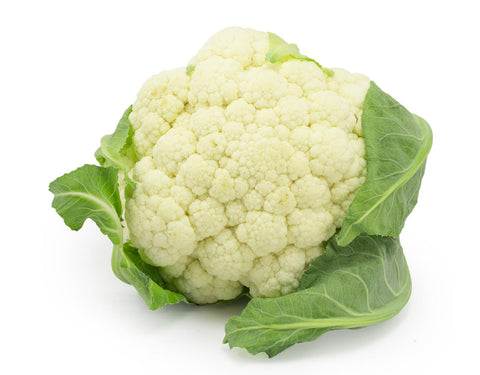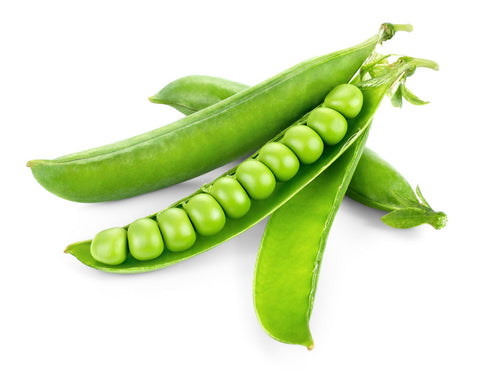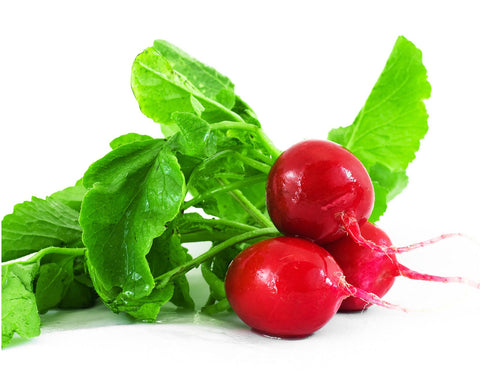If you are wondering that most of the palatable vegetables grow during summers when everything in your garden is in full bloom, you’re wrong! Winter brings its own plethora of tasty greens that you can grow in your kitchen garden quite easily. Moreover, these delicious winter veggies don’t just taste good, they are beneficial in so many ways besides providing nutrition.
Winter Vegetables Chart
Winter vegetables are usually sown between the months of August and October. These vegetables are then ready to harvest during the winter months of December till January. Take a look at the winter vegetable sowing chart to plan your vegetable garden for winters.
| S. No. | Vegetable To Grow | Growing Months | Days To Harvest | Shop Seeds |
|---|---|---|---|---|
| 1 | Beetroot | Oct to Nov | 80 to 90 | Beetroot Seeds |
| 2 | Broccoli | Sept - Nov | 90 to 100 | Broccoli Seeds |
| 3 | Brussel Sprouts | Aug - Oct | 160 to 180 | Brussel Sprouts Seeds |
| 4 | Cabbage | Sept - Nov | 80 to 90 | Cabbage Seeds |
| 5 | Carrot | Aug - Oct | 70 to 80 | Carrot Seeds |
| 6 | Cauliflower | Sept - Nov | 110 to 120 | Cauliflower Seeds |
| 7 | Kale | Sept - Nov | 60 to 90 | Kale Seeds |
| 8 | Kohlrabi | Sept - Oct | 60 to 70 | Kohlrabi Seeds |
| 9 | Leek | Aug - Oct | 80 to 90 | Leek Seeds |
| 10 | Lettuce | Sept - Nov | 40 to 50 | Lettuce Seeds |
| 11 | Onion | Sept - Nov | 150 to 160 | Onion Seeds |
| 12 | Peas | Sept - Oct | 55 to 60 | Peas Seeds |
| 13 | Radish | All seasons* | 45 to 50 | Radish Seeds |
| 14 | Spinach | All seasons* | 50 to 60 | Spinach Seeds |
| 14 | Turnip | Oct - Nov | 45 to 55 | Turnip Seeds |
*Depending on the variety being grown.
Planting the Healthiest Winter Vegetables
To help you learn more, we’ve curated a list of 8 flavour-packed vegetables that you should definitely have in your garden this winter season.
Spinach

If you have never heard of the king of the leafy greens, spinach, you’ve got to be living under a rock. Did you know that iron in spinach plays a vital role in the functioning of our red blood cells? From transporting oxygen all over in the body to DNA synthesis, every important life-sustaining activity is carried out by these microscopic red blood cells. Not just that, being a great source of Vitamins A, K, C, B-12, Iron, Folate, Manganese, and Magnesium, spinach also helps maintain the health of your bones. So much so that these leafy greens proudly brag about being the richest in Vitamin K in the vegetable kingdom.
How to grow spinach:
If you are still wondering whether to have this low-calorie leafy green reign supreme in your garden this season, you might want to consider that spinach seeds only take about 37 to 45 days to go from seed to fresh, crunchy leaves on your dinner table. With a couple of light sprinkles of water per week coupled with partial to full sunlight, spinach is a fast and easy farm to table crop that you must have in your kitchen garden.
Read more about growing Spinach at home in India.
Carrot

Winter, anywhere in India, is incomplete without Gajar ka Halwa, don’t you agree? You don’t need to have the same genes as Bugs Bunny to love these ready-to-munch-on treats. Majorly helping in improving and maintaining your eyesight, carrots are also believed to help lower blood cholesterol levels. The antioxidants present in carrots not only aid weight loss but are also responsible for reducing the risk of life-threatening diseases such as Cancer.
How to grow carrots:
With so much goodness packed in them, wouldn’t you rather have these yummy munchies growing in your backyard? Trust us when we say that home-grown carrots are much sweeter than those you find in your local market. Carrot seeds are not fussy at all with their water and sunlight requirements. An inch of water per week and about 6 to 8 hours of sunlight a day is more than enough for carrots to provide you with an optimum yield in just 50 to 75 days.
Learn more about growing carrots at home.
Cauliflower

Don’t be fooled by the innocent, flowery exterior of this power-packed, tasty vegetable. A rich source of fiber and water, cauliflower helps keep your digestive functions in check, lowering the risk of colon cancer. This flowery green vegetable also maintains your immune system, reducing the risk of inflammation-related conditions like cardiovascular diseases, diabetes, and even obesity. A regular intake of cauliflower provides a healthy dose of important vitamins and minerals like Vitamin B-12, C, and K along with magnesium, phosphorus, potassium, and folate.
How to grow cauliflower:
Besides the overload of essential nutrients, cauliflower seeds require as little as 2 inches of water per week along with 6 to 8 hours of sunlight in a day to give you fresh produce in about 55 to 100 days. So, what are you waiting for? Cauliflower should definitely be on your must-grow list of vegetables this winter season.
Green Peas

The little pods of green peas might look like a greenie you can overlook in your daily diet, but do you know every pea in the pod is brimming with a ton of essential nutrients? From an impressive amount of fiber that helps keep your digestive activities in check to blood pressure regulating properties, green peas pack quite the punch of delicious goodness. Despite the common misconception, green peas help to regulate blood sugar levels, making it a good food source for diabetics.
How to grow green peas:
These climbers don’t just make for great wall decoration but green peas seeds are also quite easy to grow in the comfort of your backyard. A mere 1 inch of water per week along with 6 to 8 hours of sunlight in a day and these tiny pods of deliciousness would be ready to be transformed into a hearty pea-soup in just 60-70 days. Now that’s quick and delicious, produce!
Onion

We have had an ongoing love-hate relationship with onions, especially with the sharp rise and fall of prices these past few years. Abundantly available, onion is one of the easiest vegetables to grow, not just in winters but all year round. Don’t go by their foul smell or their ability to make you shed a few tears, these tiny bulbs are rich in Vitamin C that maintain your immune system. TheB-vitamins it possesses play a major role in the production of red blood cells, helping improve your metabolism. The antioxidants present in onions help manage other necessary functions of your body as well, such as cholesterol levels, inflammation, etc., reducing the risk of serious heart diseases.
How to grow onion:
A great source of water, onion seeds don’t actually require as much water during their growth cycle. About 350 to 550 mm of water and a light sprinkle every couple of days is all it takes for onions to flourish. With about 6 to 8 hours of sunlight a day, these sharp-tasting bulbs of goodness are ready for harvest in 100 to 120 days.
Lettuce

This easy-to-grow leafy vegetable will be a perfect pick for your winter garden. The crunchy greens pair well with your burgers, salads, and everything in between. Lettuce is a great source of fiber, iron, folate, and vitamin C. This leafy vegetable gets ready to be harvested within a few weeks of planting. It is one of the few vegetables that do well in both containers and gardens.
How to grow lettuce:
Grow lettuce seeds in a rich potting mixture about 1 inch apart and cover with a layer of soil. With minimal attention spanned over a few weeks, your lettuce will be ready to please your taste buds. Harvest your lettuce just before you’re going to add them to your dishes. The fresher the leaves, the better the taste.
Read and learn more about growing lettuce at home in India.
Radish

Another winter favourite, radish is a staple in most households during these chilly months. Whether it is Mooli ke Paranthe or a delicious vegetable made with its leaves, the radish is one vegetable that doesn’t go to waste. A rich source of Vitamin A, B6, C, D, and minerals like iron, sodium, potassium, magnesium, and calcium, radish aids in increasing oxygen supply to the blood, improving digestion, immunity, and fortifying blood vessels.
How to grow radish:
Good for your skin, radishes are great for a quick and easy harvest with minimal effort. Keeping the soil moist during the growth cycle paired with at least 6 hours of sunlight in a day, radish seeds should be fresh on your table within 25 to 45 days.
Make the most of your home-grown radishes with Healthy Radish Recipes To Energize Your Day.
Mustard Greens

Lesser-known in the vegetable kingdom is another leafy green that is grown mostly for its seeds in lieu of the leaves. Mustard leaves contain impressive amounts of antioxidants that protect your body from radical damage by detoxification.
The fibrous leaves of the mustard plant help regulate your digestive functions as well, lowering the cholesterol levels in your blood. If that is not a good enough reason to have these tasty treats in your kitchen garden, then consider their ability to prevent arthritis, osteoporosis, asthma, and many such lung diseases as well.
How to grow mustard greens:
Apart from being a powerhouse of nutrients, mustard green seeds are easy to grow and enjoy fresh from your backyard. Ready to be consumed in just 20 to 30 days, mustard greens only need about 2 inches of water per week along with 5 to 7 hours of sunlight in a day.
If you’re a novice gardener, then read this Beginners’ Guide To Preparing Winter Garden and start growing your greens today!
So, what are you waiting for? Check out our range of high-quality vegetable seeds including the ones in this list and so many more that you can grow in your kitchen garden this winter season. Don’t forget to tell us about your gardening stories; we love hearing from you!


 Sign In
Sign In


















Let us know your feedback
* Comments must be approved before being displayed.